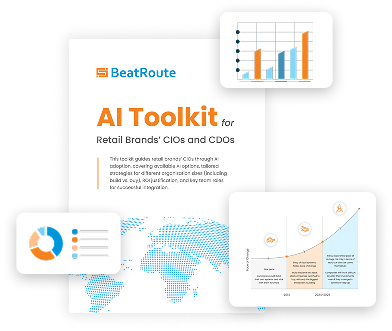3 Important Characteristics of Distributor Management Software in 2025

Last decade, FMCG companies were struggling with sales visibility throughout distribution channels. Now the challenges are beyond secondary sales and inventory visibility.
Most of the companies started using basic structured Distributor Management Software for solving these challenges. From there, DMS has come a long way and its evolution has helped the companies solve pressing issues of catering complex network of distributor personas, real-time sales visibility and e-invoicing, master price control and more. By the end of the article, you will know what to look for in DMS built for in 2024?
For this age of bottle neck competition, you need a cutting edge solution for streamlining your distribution channels. Why do we say that? That’s because, in today’s consumer world, supply and distribution trends have changed tremendously. Enterprises or companies that miss on new-age DMS are affecting order management, inventory management, and delivery management. All of these impact your ROI directly.
Characteristics of Distributor Management Software to Look Out For
Enterprises can shift to a Hybrid DMS to get higher fill rate, higher throughput per distributor and reduced cost of operations. However, every industry has its own structure of distribution and it cannot be one fit for all. Hence, we are interested in showcasing a solution specially designed for streamlining distributor management software in Fast Moving Consumer Goods industries. Here are three characteristics of DMS you need to look for this year.
1. Hybrid DMS for Hybrid distributor persona landscape

Every brand realizes they can see their distributor landscape in 3 categories –
- Ones who are ready to walk hand-in-hand with you. They will start invoicing from the Distributor Management Software as soon as you onboard them
- Ones who see it as extra labour and will agree to sharing secondary sales data but not invoice from the DMS. They will happily agree for a Tally connector like this one.
- Then there are single person distributorships with no operator to help. They are usually good with a lite version of DMS on the smartphone.
2. Collaboration on WhatsApp

More than the transaction, distributors are exchanging information on whatsapp with retailers. Messaging driven facilitation of conversation among sales reps, distributors and retail stores goes a long way in saving communication hassle and bringing clarity between the distributor and their retailers. Instant intimation on various events such as order, payment, dispatch among them kickstarts this collaboration.
3. Mini CRM for Distributors

Full statement of account is basic glue in distributors being able to appreciate how a DMS is helping them. It is not about just secondary sales and inventory visibility for the brant. From distributor’s perspective its a tool that can expedite their receivables and save them operational overhead. Nothing less than a tight integration with the brand ERP system such as SAP and a resultant visibility of all debit notes, credit notes, invoices and payments is what distributors expect. BeatRoute makes it a true extension of the brand’s ERP system to the distributor.

BeatRoute’s DMS is India’s first DMS with unique Tally Plugin. It can fetch the data for you without disturbing your distributors. It works on Easy file based installation, pulls & pushes data from Distributors Tally system to handle the objection of dual entry by Distributor.
Basic DMS features that cannot be missed
The above characteristics are novel and it can add great benefit to your business. However, make sure that you don’t miss out on the basics.
i) Secondary Sales Visibility to your Teams
BeatRoute’s distributor management software not only brings the secondary sales data but also makes it very consumable to central and territory teams thorough its configurable score card dashboards. This bridges the gap between order collection and actual fulfillment.
ii) Driving Purchase by Distribution Partners
The gap between supply and demand is a determining factor for the sales of your products. So, if you miss on overcoming this gap, you will allow a window for your competitor’s sale. The visibility of inventory to territory managers and nudges to distributors means timely purchase orders to the brand resulting in higher fill rates and minimal stockouts at the store.
iii) Effective Trade Promotion
Make sure your schemes and promotions are meaningful and you can rescue misappropriation of scheme sales loss. Automated application of schemes and nudges to distributors means optimal utilization of scheme budgets by sales reps and distributors alike leading to intended upsell and cross-sell.
iv) Expedited Claim Reimbursement
The claim processing needs to be faster and more transparent with approval workflow. This is an important key to maintain healthy relations with the distributors and with retailers too in case claims are related with ultimate disbursals to retailers. R Claim processing is a glue for adoption of DMS and BeatRoute makes it absolutely a seamless and easy process for distributors, retailers and the brand to facilitate this.
To Conclude…
Distributor Management software does not have to be a point of friction between the brand and the distributors. If this is approached appropriately, it can form the true bridge between the brand and its distribution network.
Therefore, the key is to think of Distributor Management Software as a tool that can help distributors themselves and seek to make it a collaboration platform for the brand, distributors and retailers and not the brand’s way of getting a peep into the secret world of distributors.
What I suggest is, explore this new space of Hybrid DMS solutions and request free demo today.
About the Author
-
Nikhil is a marketing professional with a passion for enterprise SaaS and the role that technology can play in helping businesses succeed. He is passionate about enabling digital transformation for retail brands, and explores how brands can enhance their sales execution and distributor engagement with the help of technology.
Use Goal-Driven AI to Achieve Retail Sales Uplift, Today!
Join enterprises in 20+ countries that trust BeatRoute, the globally dominant AI platform for sales force automation, field sales, DMS, and eB2B
Latest Insights & Articles
Here are the most impactful articles, platform updates, ebooks and reports for you.


